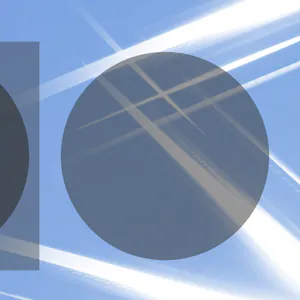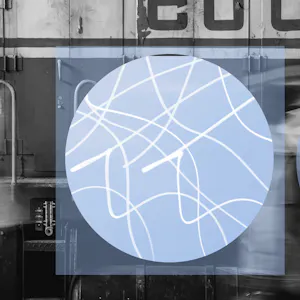Business Continuity Management Systems



Online influence campaigns are becoming increasingly common as political parties and state actors around the world seek to manipulate public opinion. Pseudo-media outlets are used frequently in influence campaigns to achieve this goal – they are channels in which adversarial threat actors can publish misleading content to be further spread across social media both organically and inauthentically.
Threat actors with financial or ideological motivations use these pseudo-media outlets to share misleading or biased content. The outlets with ideological or political motivations tend to sit within wider disinformation networks, producing propaganda that bolsters a particular political viewpoint. For example, recent reports highlight a network of over 100 websites disguised as local news outlets promoting pro-China propaganda in over 30 countries across Europe, Asia, and Latin America.
When combined, there are several signs that can indicate whether a news site or social media account is likely to be a pseudo-media entity. We spoke to our Digital Investigations team to compile these signals:
The defining feature of pseudo-media outlets is that they aim to remain covert. They differ from ‘alternative’ and opinion-focused media in that they try to hide their motivations and operators – appearing to be sources of unbiased news.
While legitimate media outlets will generally be open about ownership, authorship, and motivation, pseudo-media outlets are not; they will have little to no information about themselves on their websites and social media pages, enabling them to conceal details about their operation and purpose.
This covertness also extends to authorship. Pseudo-media outlets typically do not disclose any authorship information, or they will use fake author names accompanied by stolen, stock, or AI-generated images to appear authentic.
Content published by pseudo-media outlets is usually misleading, biased, or outright false. In the case of financially motivated outlets, the focus is on sensationalist, clickbait content deliberately designed to garner clicks and generate ad revenue at the expense of accuracy. Ideologically focused outlets tend to be more insidious, promoting narratives which push a particular political viewpoint in the guise of independent or unbiased reporting.
Pseudo-media also prioritises quantity over quality; posting poor-quality content at a high rate. It is often badly written, containing grammar mistakes, spelling errors, misattributed imagery or text, and a lack of sourcing – all indications that content is created with haste and a lack of journalistic standards. This focus on quantity highlights the goal of reaching as many people as quickly as possible to sway public opinion, with little regard for the truth. Some outlets plagiarise content from established news sources to hide their more misleading self-produced content among legitimate, unbiased reporting.
Pseudo-media sites may mimic the name and branding of established sites—either wholesale or slightly modified—to deceive audiences into thinking they are legitimate news outlets. These can include spoof domains which closely resemble the URLs of legitimate media outlets.
For example, in September 2022 Meta researchers revealed 60+ fraudulent websites disguised as reputable international outlets peddling Russian propaganda. The sites included those mimicking the Guardian in the UK and Der Spiegel in Germany, which posted content questioning reports on Russian war crimes in Ukraine among other pro-Moscow narratives.
The ideologically motivated outlets are often created in response to, or ahead of key events, such as elections and conflicts.
If, for example, a website is created only months or weeks ahead of an election, and is exclusively posting election-related content biased in favour of one candidate or party, then it’s likely to be a pseudo-media outlet established with the purpose of manipulating public opinion ahead of said vote.
Another signal of party or state-linked pseudo-media outlets is a lack of monetisation. Outlets operated by, or linked to, political parties or foreign states are unlikely to be monetised given that their motivation is to manipulate public opinion rather than seek monetary gain. This lack of monetisation, combined with consistently biased content, indicates that an outlet is likely covering operating costs with financial backing from a politically motivated source.
Multiple pseudo-media sites may be hosted on the same IP address, indicating that they form a larger network. This is especially true if they share similar branding, website templates, naming conventions, narratives, and content. Additionally, pseudo-media sites with poor operational security may also be hosted on the same IP address as websites openly associated with the individuals or organisations running them.
Pseudo-media outlets are often central nodes within wider online disinformation networks, serving as a channel through which disinformation is initially published before being disseminated to audiences across social media. They therefore often have associated inauthentic social media profiles, pages and channels—which typically do not disclose their links to the outlet—to amplify its content covertly across social media.
Signals on social media can also help reveal pseudo-media outlets and many platforms have features to help users judge authenticity. For example, Facebook’s Page Transparency section details the location of Facebook page admins. So, if the Facebook page of a US-focused ‘news’ outlet posting pro-Russia narratives has 10 admins based in Russia, it’s unlikely to be a legitimate outlet.
Pseudo-media outlets also often leverage inauthentic engagement on social media to increase the virality of their content and reach organic users; their associated social media accounts may use bot accounts to artificially amplify their content across various platforms.
The rise of generative AI represents an increased threat to the online information ecosystem, facilitating the production of text, image, video, and audio content in mere seconds or minutes.
Such technology makes it easier for adversarial threat actors to establish more sophisticated pseudo-media outlets, allowing them to create misleading or outright false content at a far larger scale, and at little cost. This technology may potentially increase the quality of misinformation, with more convincing content that is harder to verify or debunk.
The reduced time needed to create such content with generative AI will likely increase the personalisation of disinformation, allowing threat actors to better tailor their content towards specific audiences to manipulate public opinion in a far more targeted fashion – something that increases the risk of media manipulation during election periods in particular.
Pseudo-media outlets are designed to manipulate audiences through misleading content, but their signals are relatively simple to spot once you know what to look for. However, these outlets are likely to get more sophisticated with time with the introduction of AI and the increased accessibility of easy-to-use website builders.
Threat actors are also likely to refine their techniques when creating such outlets by increasing the quality of their content, using stronger operational security methods, and tapping into the increased fragmentation of online media environments to target specific audiences, increasing their longevity in turn.
These developments will make pseudo-media outlets harder to detect than they are now, highlighting the importance of remaining vigilant and sticking to trusted news sources that are transparent about their ownership and authorship, and adhere to well-sourced and evidence-based reporting.

In the rapidly evolving digital landscape of 2025, every organisation faces a huge range of challenges that extend far beyond traditional cyber threats.

We began this year knowing it was going to be a significant year for digital risk and digital safety. An unprecedented number of elections, brand new online safety legislation under implementation – all taking place against a backdrop of both existing and new conflict and war.

Digital threat intelligence helps us respond to harmful entities and their activities online. As our professional investigation capability evolves, so do the online tactics of threat actors themselves, in something of a perpetual cat and mouse game.